Could Big Bang theory be wrong?
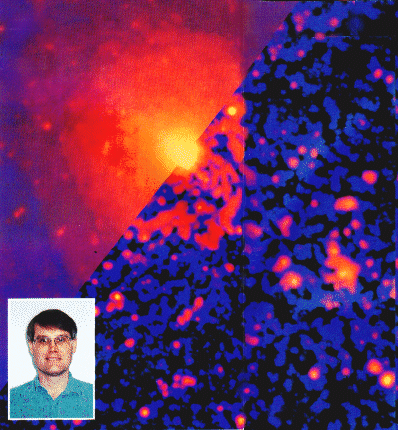 |
Scanning the universe A composite picture of galaxy NGC4571, in the Virgo cluster. The speckled segment of the image has been processed to help identify Cepheid Variables - stars that help astronomers work out the Hubble constant. |
The problem? The universe appears to be about half as old as the oldest
stars in it
Dr Michael Pierce and his team, of America's Kitt Peak Observatory, used observations of stars in the Virgo galaxy cluster to establish how far away it is - a distance that can be used to calculate the Hubble constant, a measure of how fast the universe is expanding. Plug their results, announced recently in the prestigious science journal Nature, into current cosmological theory, and the universe seems to be about seven billion years old, give or take 600 million years.
This may seem like a suitably great age for a universe, but there is very good evidence that some stars in our own galaxy are at least 14 billion years old. So Dr Pierce and his multinational team appear to have proved that the universe is substantially younger than some of the objects in it.
|
| A puzzling observation Observations of distant galaxies made here at Mauna Kea in Hawaii suggest that the universe is much more youthful than expected - and that casts doubt on the big bang theory. |
Clearly this cannot be right: something has gone very wrong somewhere. But
where? The new measurement of the age of the universe is based on very careful
observations by a crack team of astronomers, and experts cannot detect any
obvious flaws. Few astronomers doubt the dating of the oldest stars either,
which is based on well-established theory. That leaves one disturbing
possibility: that the Big Bang theory
of the universe may be wrong.
This possibility has, in fact, been gaining weight for a few years. Cosmologists,
astronomers specialising in understanding the whole cosmos, accept that some
problems they expected to have sorted out by now are refusing to go away.
While most fundamental measurements in science tend to converge to a single
value over time, estimates of the age of the universe are still yo-yoing,
with the best-regarded giving ages that are too young by billions of years.
Worse still, the Big Bang theory predicts that there should be a hundred
times more matter in the universe than can be seen directly through telescopes.
Yet attempts to prove the existence of this invisible "dark matter" have
failed.
Professor George Efstathiou, a leading cosmologist at Oxford University,
puts it succinctly: "I think we've got a real problem." These problems are
putting a huge strain on the central pillar of cosmology: Einstein's theory
of gravity, known as the General Theory of
Relativity (GR).
First published almost 80 years ago, GR explains gravity as the result of
the warping of both space and time by matter. When applied to the entire
universe, the simplest version of the theory predicts that the visible universe
is expanding like the surface of a balloon, propelled by the energy of the
Big Bang. Clusters of galaxies, it predicts, should be racing away from their
neighbours, and by measuring their speed and distance GR allows cosmologists
to work out when the Big Bang took place. This is what Pierce and his colleagues
did, using a state-of- the-art telescope: they measured the speed and distance
of the Virgo cluster of galaxies, and used the equations of GR to calculate
an age for the universe.
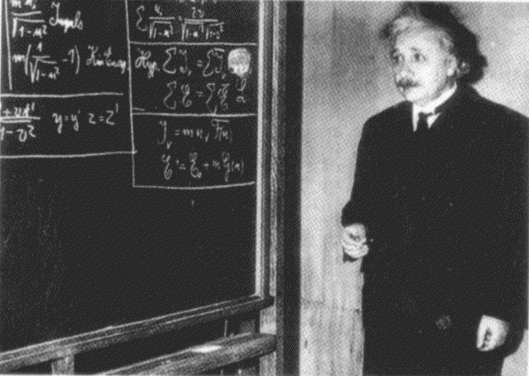 |
Einstein's biggest blunder
Einstein found that his theory of gravity implied an expanding universe, which seemed absurd, so he introduced a cosmological constant to force his equations to show a static universe. But in the 1920s observations showed that the universe does expand and Einstein's original equations were right. He later described the cosmological constant as the biggest blunder of his life. Lots of cosmologists now believe it spoils the elegance of his theory of gravity - and in science aesthetics have often proved to be a good guide to the truth. |
The exact answer depends on the version of GR theory used. At present,
cosmologists favour a version in which the very early universe underwent
a period of extremely fast expansion known as inflation, triggered by sub-atomic
events occurring just after the universe was born. This "inflationary" version
of GR explains why today's universe looks the way it does. It also gives
an easy way of calculating the age of the universe, and predicts that the
universe will expand forever.
However, when combined with the measurements made by Dr Pierce and his team,
this version of GR leads to an impossibly young universe, and also predicts
that there should be huge quantities of the invisible - and so far undetected
- cosmic dark matter.
The solution seems clear: abandon this version of GR. Yet cosmologists are
very reluctant to ditch the successes of the inflation theory. For example,
satellite observations of the cosmos show that the heat of the Big Bang can
still be detected, spread evenly throughout space. But how did widely separated
regions of the universe come to be at precisely the same temperature?
The Hubble constant: what it means and how to find it
|
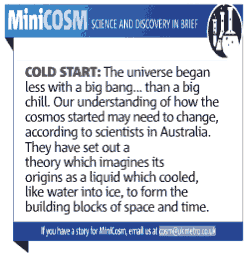 According
to inflation theory, these regions were originally in close physical contact,
and were separated by the colossal expansion triggered by inflation.
According
to inflation theory, these regions were originally in close physical contact,
and were separated by the colossal expansion triggered by inflation.
The good news is that there is a way of preserving the successes of inflation,
while solving the problems. It involves adding a correction to the equations
of GR which is known as the
"cosmological
constant". This adds a weak new force to the universe.
Introducing a cosmological constant can make the universe older than it appears
to be on the assumption that only gravity is at work. It also contributes
to the total energy and mass in the universe, solving the 'dark matter" problem.
To do this, it must make up about 80 per cent of the energy in the universe.
Now the bad news: evidence has emerged recently that the cosmological constant
- if it does exist - cannot be that large. The evidence was obtained by
Christopher Kochanek at the Harvard-Smithsonian Centre for Astrophysics in
Massachusetts, an expert in gravitational lenses - multiple images of galaxies
formed when their light is bent by those closer to us. If the cosmological
constant idea is right, it curves the space between us and the distant galaxies,
and thus affects the number of gravitational lenses we see. If the cosmological
constant is right, we should have found fifteen; in fact there are six.
Cosmologists would be delighted if their colleagues had made some observational
blunder. Yet as data comes in, the need for a radical rethink grows clearer.
Even so, they will hang on to the Big Bang theory - if only to avoid an outbreak
of scientific anarchy: "In cosmology we shouldn't dismiss any idea out of
hand," says Professor Efstathiou. "But with so many directions to go in,
we should stick with what we know until there are good reasons for giving
it up."
Robert Matthews
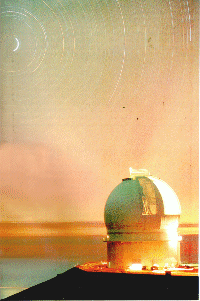
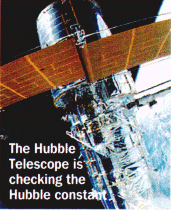 Ever
since the first nomads gazed into the sky, humans have pondered on the universe's
size. Einstein's theory of relativity helps with this: it implies the universe
is like an expanding balloon. Study two points on the balloon's surface,
and you see that the further apart they are, the faster they move away from
each other as the balloon inflates.
Ever
since the first nomads gazed into the sky, humans have pondered on the universe's
size. Einstein's theory of relativity helps with this: it implies the universe
is like an expanding balloon. Study two points on the balloon's surface,
and you see that the further apart they are, the faster they move away from
each other as the balloon inflates.